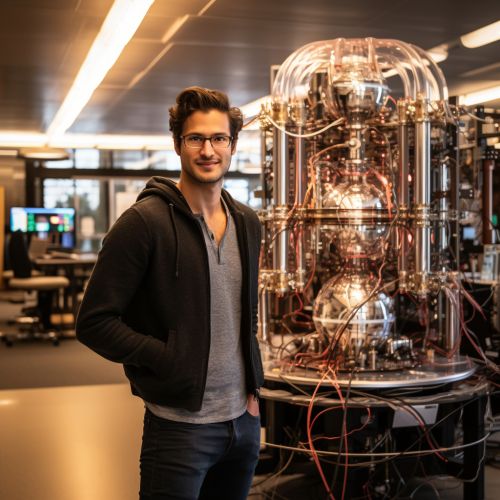Phase Qubit
Introduction
A Phase Qubit is a type of superconducting quantum circuit that operates as a two-level quantum system or qubit. This qubit is characterized by its use of the phase difference between two Josephson junctions as the quantum variable. The phase qubit was one of the first superconducting qubits to be developed and has contributed significantly to the field of quantum computing.


Principle of Operation
The phase qubit operates by exploiting the quantum mechanical properties of a superconducting circuit. The circuit consists of a superconducting loop interrupted by a Josephson junction. The junction behaves like a nonlinear inductor, allowing the phase difference across the junction to act as a quantum variable. This phase difference is used to define the two states of the qubit.
The energy levels of the phase qubit are determined by the quantum harmonic oscillator potential of the junction, which is anharmonic due to the nonlinearity of the junction. This anharmonicity allows for the isolation of the two lowest energy levels to act as the computational basis states of the qubit.


Fabrication
Phase qubits are fabricated using standard microfabrication techniques. The superconducting loop and the Josephson junction are typically made from thin films of aluminum or niobium, which are deposited on a silicon or sapphire substrate. The junction is created by the oxidation of the superconducting material, forming a thin insulating barrier.
The fabrication process is critical to the performance of the phase qubit. Any imperfections in the junction or the superconducting loop can lead to loss of coherence and decrease the qubit's performance.


Quantum State Manipulation
The quantum state of the phase qubit can be manipulated by applying microwave pulses to the superconducting loop. These pulses can induce transitions between the two computational states of the qubit. By carefully controlling the amplitude, frequency, and duration of these pulses, arbitrary quantum states can be prepared and quantum gates can be implemented.


Decoherence and Error Correction
Like all qubits, phase qubits are subject to decoherence, which is the loss of quantum information due to interaction with the environment. Decoherence is a major challenge in quantum computing and can limit the performance of the phase qubit.
To combat decoherence, error correction methods can be implemented. These methods involve encoding the quantum information in a way that allows for the detection and correction of errors. However, implementing error correction in phase qubits is a complex task and is an active area of research.


Applications
Phase qubits have been used in a variety of applications in quantum computing and quantum information processing. They have been used to implement quantum gates, create entangled states, and perform quantum algorithms. They have also been used in quantum simulation and quantum metrology.
Future Directions
While phase qubits have been instrumental in the development of quantum computing, they face challenges in terms of scalability and coherence times. Future research in the field is focused on improving the performance of phase qubits and developing new qubit designs that can overcome these challenges.

See Also
References
- Clarke, J., & Wilhelm, F. K. (2008). Superconducting quantum bits. Nature, 453(7198), 1031–1042. https://doi.org/10.1038/nature07128
- You, J. Q., & Nori, F. (2005). Superconducting circuits and quantum information. Physics Today, 58(11), 42–47. https://doi.org/10.1063/1.2155757
- Martinis, J. M. (2009). Quantum computing with superconducting circuits. IEEE Spectrum, 46(8), 22–27. https://doi.org/10.1109/MSPEC.2009.5217100
